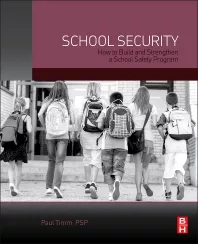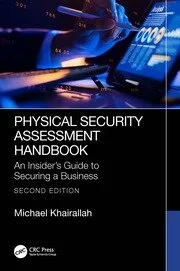Cyber Tactics
Building a robust cybersecurity team: Five essential roles and key certifications
Assembling a robust cybersecurity team is essential for protecting an organization’s information assets.

Cybersecurity is no longer just an IT concern; it’s a fundamental aspect of any organization’s strategy. With cyber threats becoming more sophisticated and frequent, having a robust cybersecurity team is non-negotiable. Your team needs professionals with varied expertise to address different aspects of cybersecurity.
Here are five essential roles to include in your cybersecurity team, along with recommended certifications that align with those roles.
Security architect
A Security Architect role is pivotal for designing the security infrastructure of your organization. The Security Architect ensures that IT systems are secure from the ground up. Key responsibilities include developing and implementing security architectures for systems, networks, and applications. They create policies and procedures to integrate security into all aspects of the organization’s IT environment, identify potential threats and vulnerabilities, and design measures to mitigate them. Evaluating and implementing security technologies such as firewalls, intrusion detection systems, and encryption methods is another critical part of their job. To ensure continuous improvement, staying updated on the latest security trends and technologies is essential. Certifications like the Certified Cloud Security Professional (CCSP) and specific certifications from industry giants like Google, Microsoft, and AWS are recommended for this role. Having a Security Architect is crucial for building a resilient security framework capable of withstanding evolving threats.
Incident response manager
The Incident Response Manager is indispensable for managing security breaches. This role involves preparing for and handling security incidents to minimize damage and recovery time. Their responsibilities include developing and maintaining an incident response plan, monitoring systems and networks for signs of security incidents, and coordinating response efforts, including containment, eradication, and recovery. They also conduct forensic investigations to understand the causes and impacts of security incidents and analyze incidents to identify lessons learned and improve future incident response efforts. Key certifications for this role include the GIAC Certified Incident Handler (GCIH) and the Certified Information Systems Security Professional (CISSP). Additionally, the Certified Information Security Manager (CISM) certification is highly recommended as it focuses on managing and governing enterprise information security, which is crucial for effective incident management. An effective Incident Response Manager ensures quick and efficient responses to security incidents, reducing potential damage and recovery time.
Assembling a robust cybersecurity team with the right mix of roles and expertise is essential for protecting your organization’s information assets.
Security analysts
Security Analysts serve as the frontline defenders of your organization's information systems. Their primary role is to monitor and protect these systems against daily cyber threats. Responsibilities include continuous monitoring of systems and networks, analyzing security alerts, and using various tools and techniques to detect and respond to real-time security incidents. Security Analysts also perform regular vulnerability assessments and penetration testing to identify and address weaknesses. Educating employees about security best practices and maintaining detailed records of security incidents are also part of their duties. Recommended certifications for this role are ISACA’s new Certified Cybersecurity Operations Analyst (CCOA) and CompTIA Security+, both of which cover essential cybersecurity skills. Security Analysts play a critical role in maintaining the security of your organization’s systems on a day-to-day basis.
Compliance specialist
In regulated industries, compliance is a significant part of cybersecurity. A Compliance Specialistensures that your organization adheres to relevant laws, regulations and standards. This role involves staying updated on relevant cybersecurity laws and regulations, developing and implementing compliance policies and procedures, and conducting regular audits. Preparing reports for regulatory bodies and educating employees about compliance requirements are also key responsibilities. Identifying compliance risks and working with other cybersecurity professionals to mitigate them is another vital aspect of this role. Certifications such as the Certified Information Systems Auditor (CISA) and the Certified in the Governance of Enterprise IT (CGEIT) are highly recommended for Compliance Specialists. Additionally, the Certified in Risk and Information Systems Control (CRISC) certification is valuable as it focuses on identifying and managing IT risk, which is essential for ensuring compliance. This role is crucial for meeting regulatory obligations and avoiding legal penalties and reputational damage.
Security Operations Center (SOC) manager
Finally, the Security Operations Center (SOC) Manager is responsible for the daily operations of the SOC. This role is essential for maintaining continuous monitoring and improving the organization's incident response capabilities. The SOC Manager oversees SOC operations and personnel, ensuring effective monitoring, analysis, and response to security events. They work closely with the Incident Response Manager to coordinate responses to security incidents, ensure the SOC is equipped with the latest tools and technologies for threat detection and response, and develop metrics to measure SOC effectiveness. Implementing processes for continuous improvement of SOC operations and capabilities is also crucial. Recommended certifications for this role include the CISSP and CCOA. SOC Managers ensure your organization’s security operations are efficient, effective and continuously improving.
Assembling a robust cybersecurity team with the right mix of roles and expertise is essential for protecting your organization’s information assets. Building a robust cybersecurity team requires not only individual expertise but also effective collaboration and continuous learning. Team members must work in unison, sharing information and insights to address complex threats effectively. Ongoing learning and development are crucial to stay ahead of the evolving threat landscape and adapt to new technologies and techniques. By having these roles on your cybersecurity team, you can create a comprehensive defense against the ever-evolving landscape of cyber threats. Investing in a well-rounded cybersecurity team is a strategic advantage in today’s digital world.
Looking for a reprint of this article?
From high-res PDFs to custom plaques, order your copy today!








